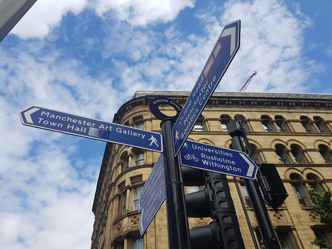Among the recommendations of the Manchester Arena Inquiry are a ‘Protect Duty’, and a regulatory body and ‘proper inspection regime’ for security under such a ‘Duty’, like the regulation enforcing health and safety, and food standards, in the UK.
Over four years have passed since the Manchester Arena attack, says the first volume of three by the official Inquiry, which began its work into the May 2017 suicide bombing after a Ariana Grande concert, last year.
The report by Inquiry chairman Sir John Saunders says: “Some changes have been made at the Arena which provide greater protection for members of the public against terrorist attacks. I have concluded that more needs to be done. There remains a risk of further attacks which requires changes to be made without delay.”
Sir John’s conclusions and recommendations begin with complacency. He writes that it’s ‘necessary to continuously remind those whose job includes being alert to the terrorist threat of the level of it and what that level means in relation to the possibility of an attack’. He notes that the UK official threat level from terrorism was severe at the time of the attack.
The report calls for a risk assessment for every venue; and that those responsible for security should be briefed at every event about the threat level and risk of terrorist attack. More specifically, all suspicious behaviour by event‑goers or the public close to a venue, such as suspected hostile reconnaissance, must be noted; and reported promptly. The report likens such reports to hoax bomb warnings: hoaxes and false alarms can cause great inconvenience, ‘but no‑one can safely ignore’ them.
On the Home Office’s proposed Protect Duty, the report notes that in 2018 parliamentarians and counter terror police described such a Duty as unlikely. The report notes drily: “Things have clearly moved on,” and credits Figen Murray, mother of one of the bombing victims, who has campaigned for a ‘Martyn’s Law’. As for how to turn that wish into law, the report points to previous, voluntary schemes, designed to protect the public in crowded spaces. The report describes the Duty as proposed by the Home Office as ‘complicated to put into operation’.
Sir John comments on the proposed Protect Duty as it applies to large, public venues (such as the Arena). He stresses the need for any Duty to be proportionate: while doing nothing is, in his view, not an option, equally, the Protect Duty ‘must not be so prescriptive as to prevent people enjoying a normal life’, he writes. He queries whether requiring sites that can hold 100 people to meet the Duty is ‘workable’. Put another way, he suggests that ‘that different considerations should apply to larger commercial premises’.
He raises the matter of reducing risk from terrorist attacks as part of the pre‑building process. Such a Duty he regards as a case of public safety, that can and should be rigorous, like regulation of food hygiene. Sir John goes on to consider details such as who would be subject to the Protect Duty; and what about shared spaces (such as where the Arena bomb was detonated; although as the report notes, under the facilities management agreement, SMG were contractually responsible for security in the City Room).
Showsec, the security contractor for Arena operator SMG, would not have responsibility under an ownership or occupation‑based duty, the report points out. Sir John argues there is ‘a strong case for making an organisation, such as Showsec, subject to such a Duty’, by contract. As for enforcing the Duty, Sir John suggests ‘that CTSAs, licensing officers, police licensing enforcement officers and the SIA (Security Industry Authority) could all combine to provide enforcement’. The report acknowledges that enforcement budgets can get cut, and calls for ‘adequate and effective enforcement process’ to be made part of the Duty; including ‘the ability to impose a penalty if there is a breach’ – civil fines, and criminal prosecutions.
The report goes on to recommend coordination and co‑operation between those with a responsibility for keeping the public safe. British Transport Police (BTP) should have liaised more closely with both SMG and Showsec so that all knew what each other were doing, according to the report. Also recommended and to do with meeting the Duty are first aid training for staff; and an official online NaCTSO library of training materials, and guidance for the completion of terrorism threat risk assessments.
The report also has things to say about the SIA, such as requiring a counter-terror element to the Approved Contractor Scheme (ACS). On training, the report notes that it’s ‘generally accepted’ within the security and crowd control industry that stewards who have been accepted for work but have not yet started should do their basic training during their own time. The report suggests those starters should be paid for taking the training.
Visit https://manchesterarenainquiry.org.uk/.










